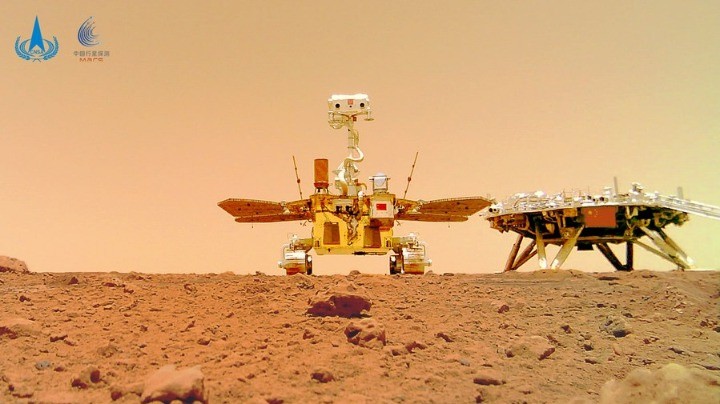The Chinese government announced last Wednesday that their space vehicle Tianwen-1 was able to photograph the entire surface of the planet Mars. The set of images included some unfamiliar parts of the Martial world, including the southern polar ice caps and a few volcanoes.
CNSA Tianwen-1 Orbiter Photographed All of Mars

The China National Space Administration (CNSA) said that their orbiter obtained medium-resolution images of the whole red planet. The photos included the popular Martian volcano Ascraeus Mons and its crater, as well as the planet's south pole, which was theorized to consist of solid carbon dioxide on its ice sheetsbeforeo its condition today.
In addition, the Tianwen-1 orbiter also captured images of the unique geological structure of the Mind crater's rim and the seven-kilometer deep Velles Marineris canyon.
Tianwen-1 has been orbiting Mars for more than 700 days since its launch. Before June ended, the space vehicle marked its 1,344 rotation around the skies of the red planet, CNSA said. To date, the orbiter has completed its planned missions.
Tianwen-1 is currently working with its land-based partner Zhurong. Both the machines were the first Chinese payloads that gathered raw data from a space mission summing up to about 1,040 gigabytes.
CNSA took advantage of having an orbiter and a rover to observe the red planet's solar occultation and solar winds. Most of their findings are also being discussed in partnership with other space agencies and international observatories.
Tianwen-1 has completed a global imaging of Mars with its medium resolution camera after orbiting the Red Planet 1,344 times. Tianwen-1 launched in July 2020 and entered Mars orbit in Feb. 2021. Images: CNSA/PEChttps://t.co/LBNqejfu9W pic.twitter.com/UvW9WGjp0Y
— Andrew Jones (@AJ_FI) June 29, 2022
Frequent collaborators of China's space research are scientific communities located in Italy, Russia, Australia, Germany, and South Africa. One of their ongoing studies is to improve the weather forecasts here on Earth through the feed of information sent by Tianwen-1 and Zhurong.
Future of Tianwen-1 and Zhurong
CNSA is committed to relaying more information from their space missions to international science institutes and laboratories in the future even if their Mars mission is now completed.
Last December, Zhurong and the Mars Express spacecraft from the European Space Agency (ESA) tested an in-orbit communication system. This demonstration assesses how effective the Mars Express could be in assisting Zhurong when it brings back information from Mars to ground control.
The tests conducted by CNSA and ESA were successful. The only issue they encountered was the approach that could let Mars Express collect signals from Zhurong since the communication relay systems between the two being different in frequencies, reports The Register.
Despite the major mission of Tianwen-1 and Zhurong having concluded, the Chinese space agency will still run some of their independent observations on the red planet. The orbiter will still hover across the skies of Mars for additional data while the rover will be put to hibernate mode up until December, when the planet will undergo extreme weather activities.
Check out more news and information on Space in Science Times.












